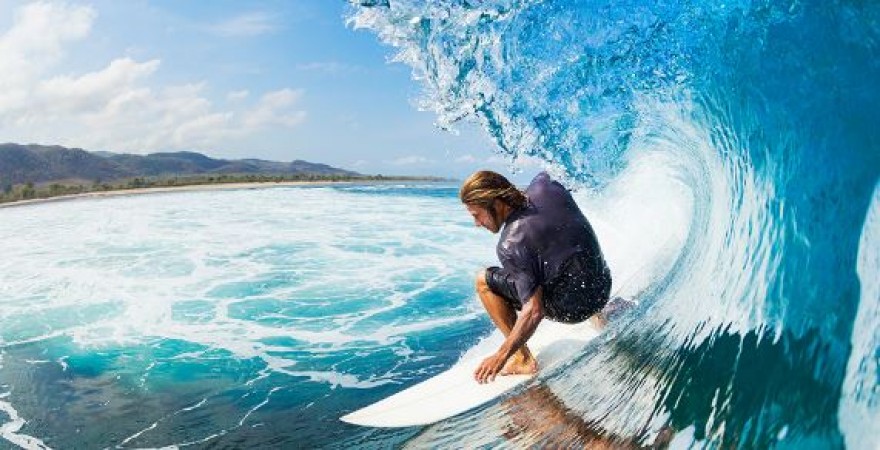
The ocean, a vast expanse of water that covers more than 70% of the Earth's surface, has always been a source of awe and mystery. One of the ocean's most captivating features is its waves. These rhythmic undulations that roll across the water's surface have fascinated humanity for centuries. Beyond their aesthetic beauty, ocean waves play a crucial role in shaping our planet's climate, coastal landscapes, and marine ecosystems. In this article, we'll delve into the science behind ocean waves and explore their impact on both nature and human society.
Understanding the Formation of Ocean Waves : Ocean waves are primarily formed by the interaction of wind with the surface of the sea. As the wind blows across the water, it imparts energy, creating ripples. These ripples can grow and evolve into fully-fledged waves through a process called wave amplification. Several factors contribute to wave amplification, including the strength of the wind, its duration, and the distance it travels over the ocean's surface, known as the fetch.
Wave Characteristics : Ocean waves come in various shapes and sizes, determined by their energy and the factors that generated them. Some waves are small and barely noticeable, while others can reach incredible heights, towering over 100 feet in extreme cases. The distance between consecutive wave crests is known as the wavelength, while the wave's height from the trough to the crest is the amplitude. The period represents the time it takes for two consecutive crests to pass a fixed point, usually measured in seconds.
ALSO READ : Scotland: A Land of Rich History
Wave Types : Ocean waves can be broadly classified into two main types: wind-generated waves and tsunamis. Wind-generated waves are the ones we commonly observe at the beach, driven by local winds or distant storms. Tsunamis, on the other hand, are long-wavelength waves often caused by undersea earthquakes or volcanic eruptions. While wind-generated waves have a relatively short period and affect the water's surface, tsunamis have a very long period and can reach great speeds, causing massive destruction upon reaching shallow coastal areas.
ALSO READ :Explore San Diego: Reflects on Rich History
The Power of Waves : The energy contained within ocean waves is immense and has the potential to significantly impact coastlines and human infrastructure. Erosion and sediment transport caused by waves continuously shape coastal landscapes, contributing to the formation of cliffs, beaches, and barrier islands. Over time, this process has both positive and negative consequences for coastal communities, providing recreational opportunities for some but posing threats to others through coastal flooding and land loss.
Surfing: Harnessing the Wave's Energy While waves have been a force to be reckoned with, they have also offered a thrilling recreational activity - surfing. Surfing involves riding the face of a breaking wave using a specially designed board. Originating in ancient Polynesia as a sacred art form, surfing has evolved into a popular global sport. Surfers chase the perfect wave, venturing to coastlines across the world, seeking the adrenaline rush and connection with nature that surfing offers.
Ocean Waves and Climate : Ocean waves play a vital role in regulating the Earth's climate. They act as a critical component of the ocean-atmosphere heat exchange, absorbing and releasing vast amounts of energy. This process influences weather patterns, precipitation, and ultimately, the climate of different regions. Furthermore, waves help distribute nutrients and heat across the ocean, influencing marine ecosystems and biodiversity.
Conclusion : Ocean waves are not only captivating to watch but also hold tremendous power and significance in shaping our planet. From their formation by the wind to their impact on coastal regions and climate, waves are a fundamental aspect of Earth's natural processes. Understanding the science behind waves is crucial for coastal communities to mitigate the potential risks they pose and make the most of the opportunities they offer. Whether it's the awe-inspiring power of a tsunami or the exhilaration of catching the perfect wave while surfing, these rhythmic undulations continue to mesmerize and enrich our lives in various ways.
How to Stay Safe While Traveling Solo ?